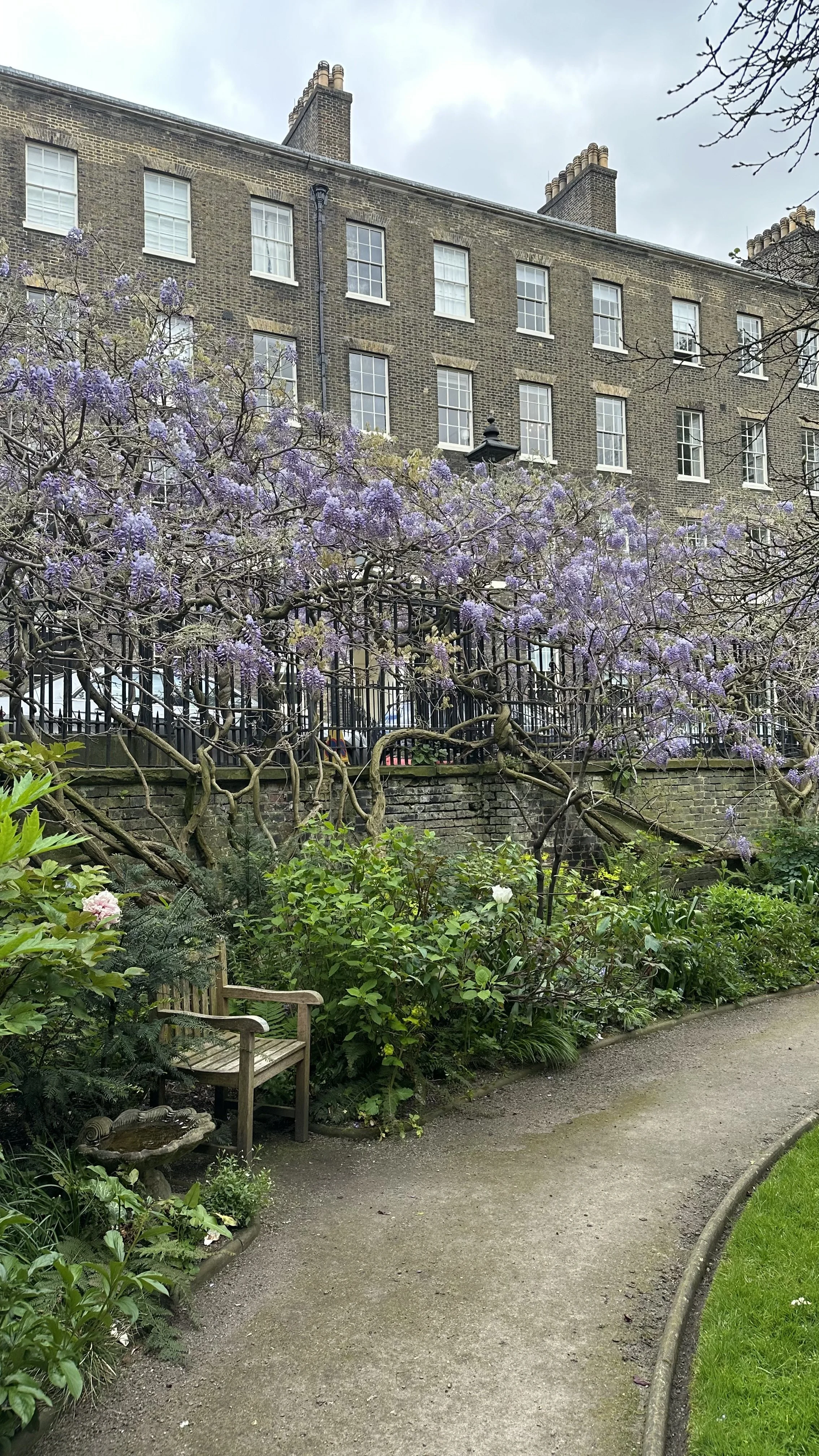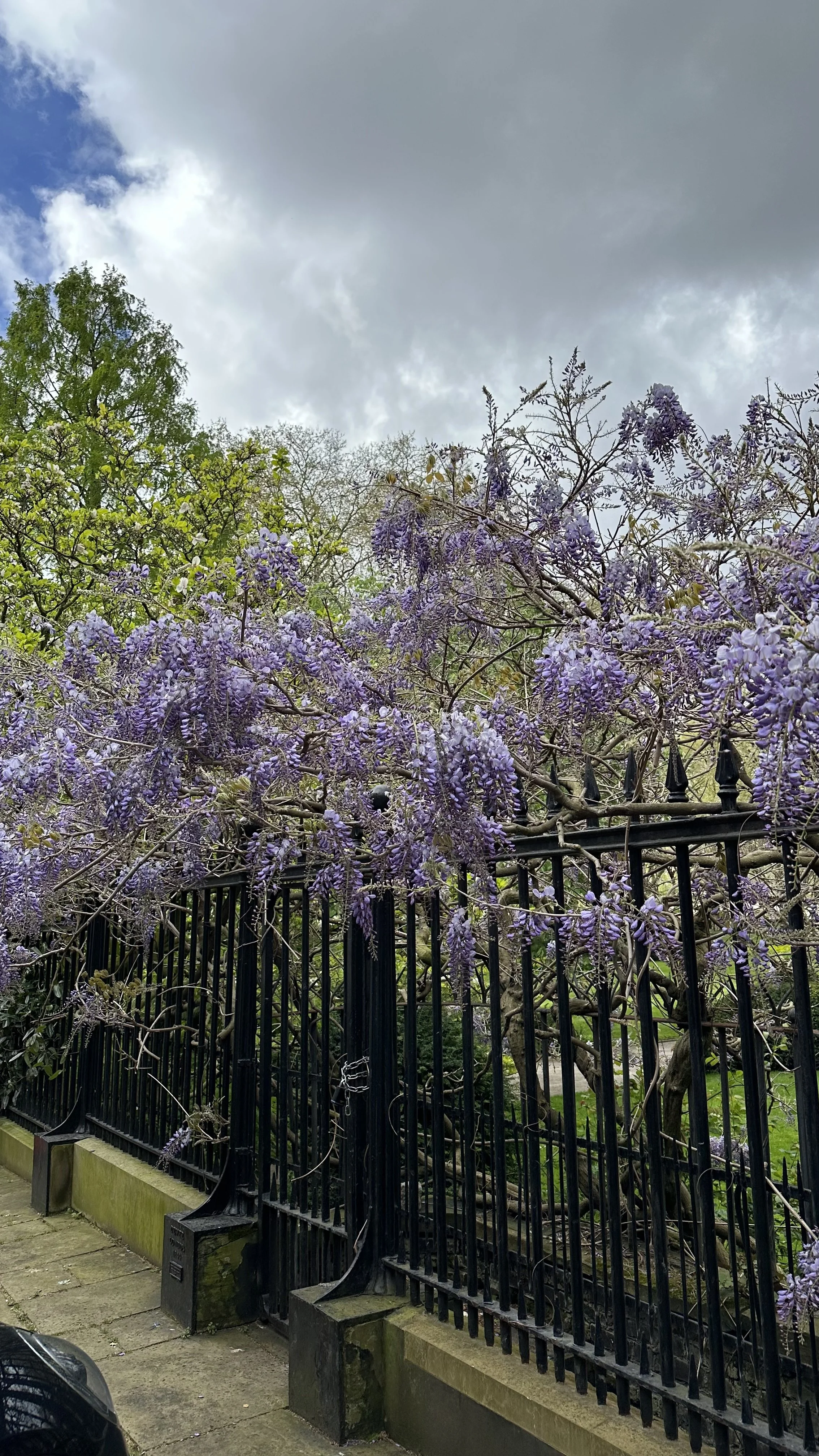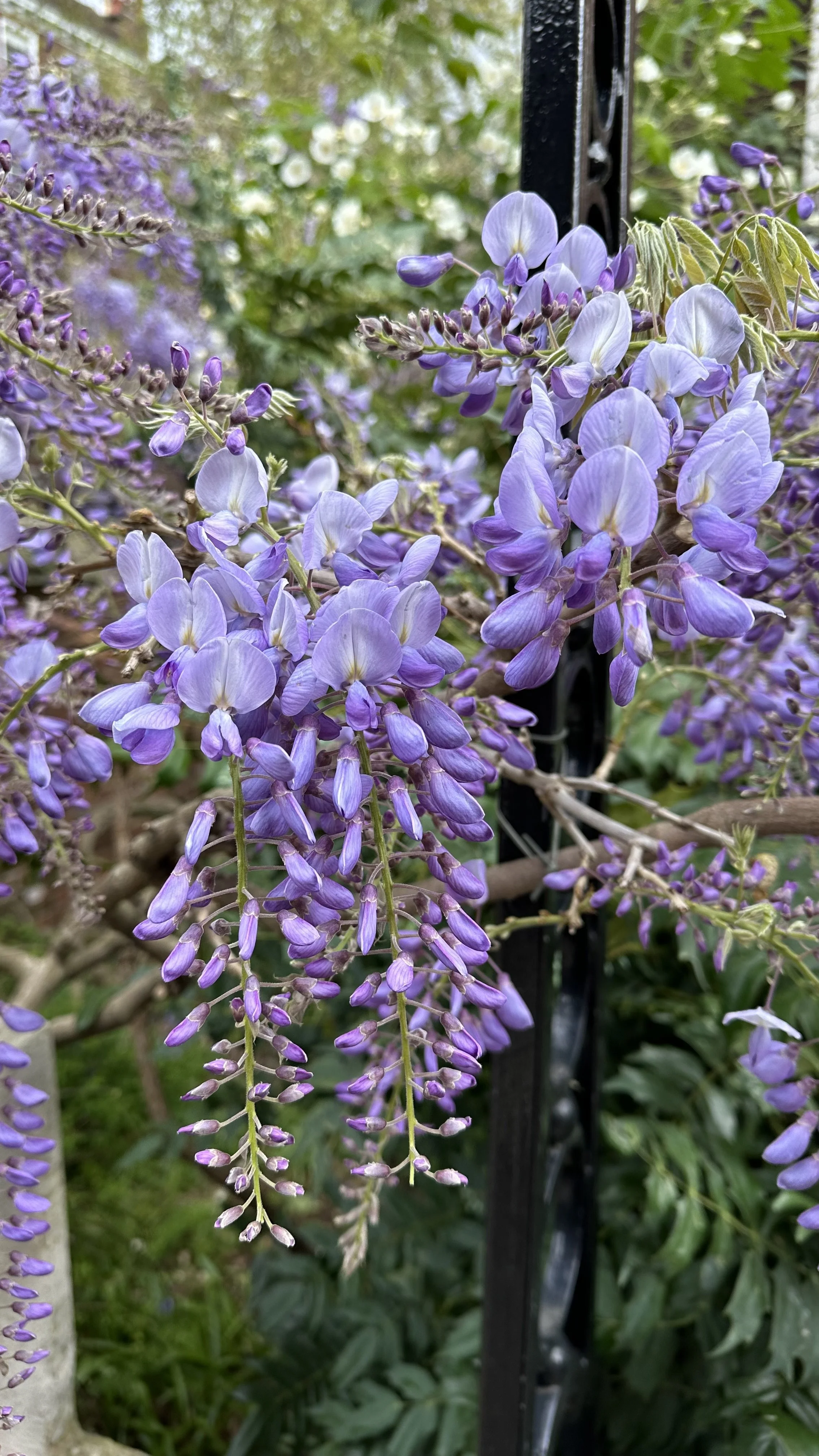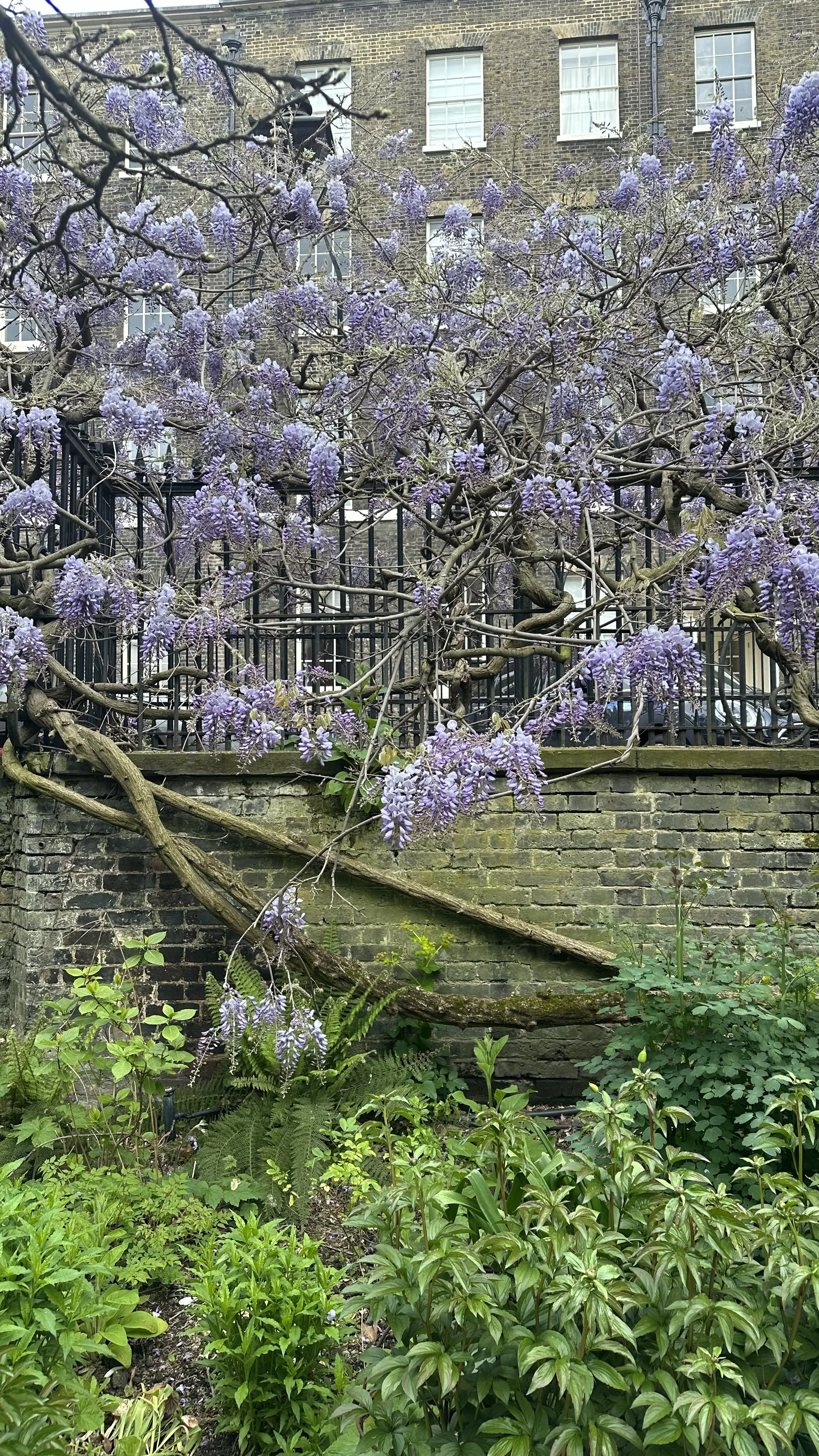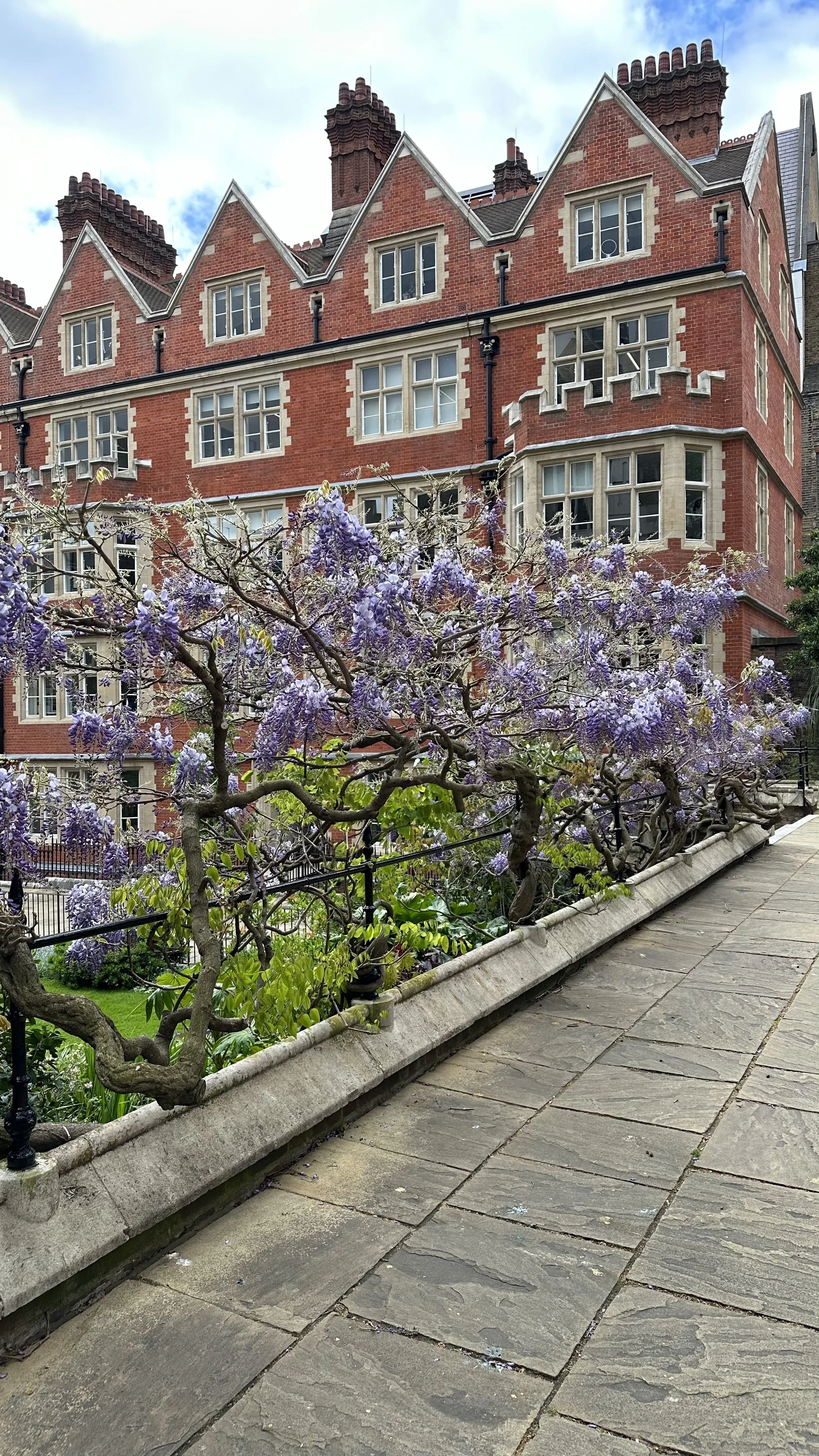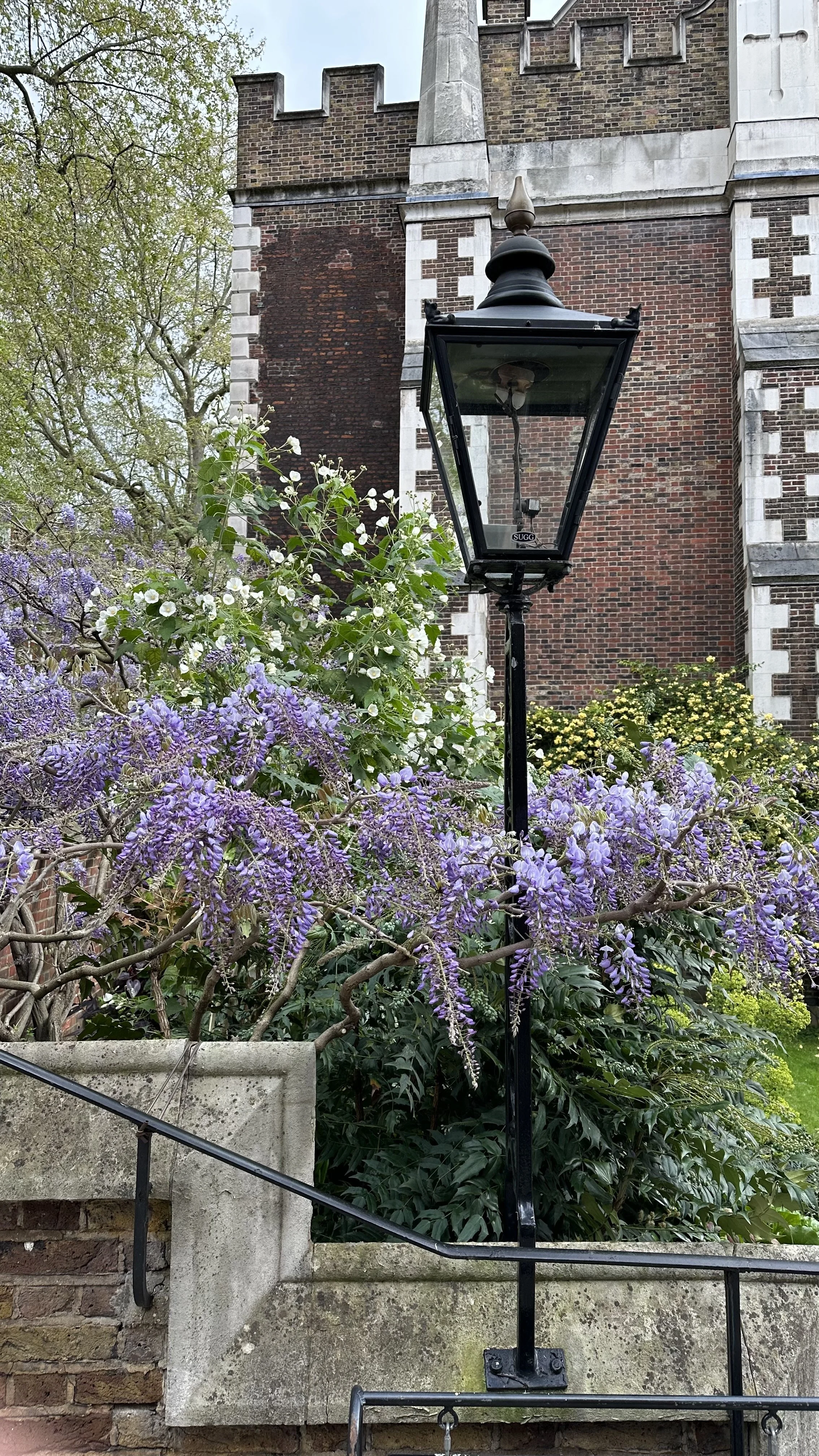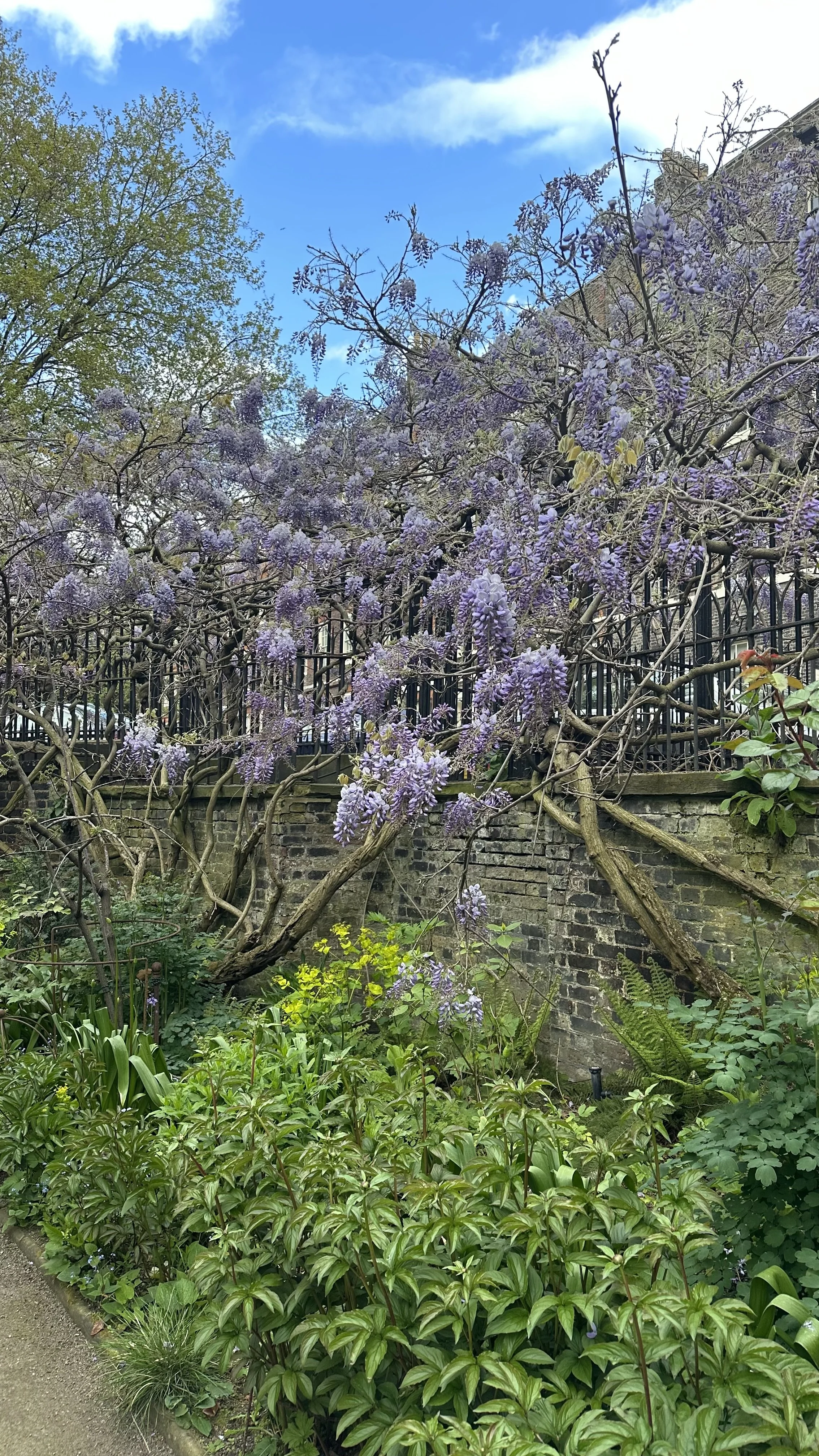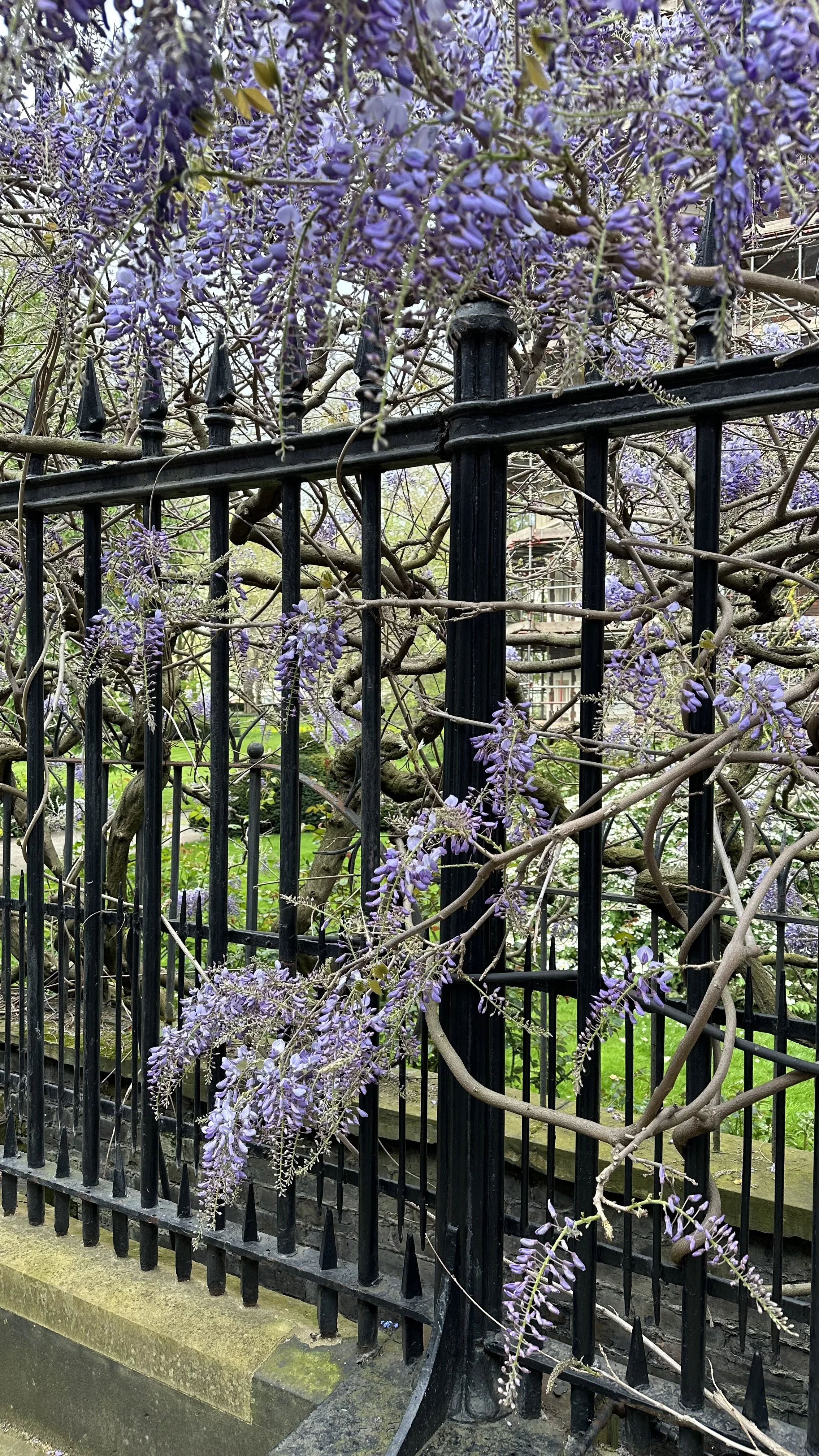Every Type of Wisteria and How to Choose the Right One
This article has links to products that I may make commission from.
Wisteria is a beautiful, flowering plant that is native to Asia and North America.
It is popular for its showy, fragrant blooms, which appear in the spring and summer.
Wisteria can be found in a variety of colors, including blue, purple, pink, and white.
Wisteria vines can be incredibly long-lived, with some specimens living for over 100 years.
In fact, there is a wisteria vine in Japan that is over 144 years old and covers an area of more than 10,000 square feet.
This amazing plant has become a tourist attraction, with people traveling from all over the world to see its beautiful blooms.
So, if you plant a wisteria vine, you may be planting a legacy that will live on for generations to come.
In this article, we will discuss the different types of wisteria so that you can choose the perfect one for your garden.
To learn more about climbing flowers, check out my guides:
Japanese Wisteria, Wisteria Floribunda
The Japanese wisteria (Wisteria floribunda) is one of the most commonly grown types of wisteria.
It is a popular and highly sought-after ornamental plant that is native to Japan, Korea, and China.
It is widely cultivated in gardens and parks around the world for its stunning, fragrant flowers and cascading vines.
Japanese wisteria is a deciduous woody vine that can grow up to 30 feet or more in length, with thick, woody stems that can reach several inches in diameter.
The leaves are compound, with 9-13 leaflets arranged in an alternating pattern along the stem.
In the spring, Japanese wisteria produces long, pendulous racemes of fragrant, violet-blue or white flowers that can measure up to 3 feet in length.
One of the defining characteristics of Japanese wisteria is its aggressive growth habit.
This plant can be highly invasive and can quickly overtake trees, buildings, and other structures if left unchecked.
As such, it is important to take care when planting Japanese wisteria and to provide a sturdy support structure to prevent the plant from damaging nearby structures or growing out of control.
Despite its aggressive nature, Japanese wisteria is highly prized for its stunning beauty and fragrance, making it a popular choice for gardeners and landscape designers around the world.
It is a long-lived plant that can thrive in a variety of growing conditions, from full sun to partial shade, and is sure to add a touch of elegance to any garden.
Looking for more garden inspiration?
Check out my other flower garden guides:
Yellow Hydrangea Leaves: Fixing the Problem
Chinese Wisteria, Wisteria sinensis
Chinese wisteria (Wisteria sinensis) is a deciduous woody vine that is native to China and is widely cultivated for its stunning, fragrant purple flower clusters and graceful, cascading vines.
It is one of the most popular species of wisteria, prized for its beauty and versatility in garden and landscape design.
Chinese wisteria typically grows to a height of 25-30 feet, with stems that can be several inches in diameter.
The leaves are compound, with 7-13 leaflets arranged in an alternating pattern along the stem.
In the spring, Chinese wisteria produces long, pendulous racemes of fragrant, lavender-blue or white flowers that can measure up to 1-2 feet in length.
The flowering period for Chinese wisteria typically occurs in late spring to early summer, typically in May or June in the northern hemisphere.
One of the defining characteristics of Chinese wisteria is its vigorous growth habit.
It is a highly invasive plant that can quickly overtake nearby trees, buildings, and other structures if left unchecked.
As such, it is important to take care when planting Chinese wisteria and to provide a sturdy support structure to prevent the plant from damaging nearby structures or growing out of control.
Despite its invasive nature, Chinese wisteria is highly valued for its stunning beauty and fragrance, making it a popular choice for gardeners and landscape designers around the world.
Here is the Chinese Wisteria I recommend:
For more garden inspiration, check out my guides:
White Spring Flowering Trees for your Garden Design
Erigeron Karvinskianus: Growing Ground Cover for Pollinators
What is the Difference between Chinese Wisteria and Japanese Wisteria?
Chinese wisteria (Wisteria sinensis) and Japanese wisteria (Wisteria floribunda) are two species of woody climbing vines in the Fabaceae family that are often grown for their spectacular, fragrant flowers.
While they share many similarities, there are also some notable differences between the two species.
One of the main differences between Chinese and Japanese wisteria is their growth habits.
Chinese wisteria tends to be more aggressive and fast-growing, with longer stems and larger leaves than Japanese wisteria.
It is also known for its ability to twine tightly around support structures, which can make it difficult to control in some settings.
Japanese wisteria, on the other hand, tends to have a more subdued growth habit, with thinner stems and smaller leaves.
It also tends to produce more lateral branches than Chinese wisteria, which can create a fuller and more compact appearance.
However, Japanese wisteria is also known for its tendency to grow slowly, particularly in its early years of growth.
Another key difference between Chinese and Japanese wisteria is the appearance of their flowers.
While both species produce long, drooping racemes of fragrant flowers in shades of purple, pink, and white, the flowers of Chinese wisteria tend to be more rounded and densely packed than those of Japanese wisteria.
Additionally, Chinese wisteria tends to bloom earlier in the season than Japanese wisteria, typically in April or May rather than May or June.
Overall, both Chinese and Japanese wisteria are highly valued for their spectacular and fragrant flowers, and both species can make stunning additions to any garden or landscape.
However, they do have some notable differences in terms of growth habit and flower appearance, which may influence which species is best suited for a particular setting or purpose.
For more inspiration, check out my guides:
American Wisteria, Wisteria fustescens
American wisteria (Wisteria frutescens) is a deciduous woody vine that is native to the southeastern United States.
It is a less common species of wisteria than its Asian counterparts but is highly valued for its delicate, fragrant flowers and smaller size.
American wisteria typically grows to a height of 10-30 feet, with thinner stems than Chinese or Japanese wisteria.
The leaves are compound, with 9-15 leaflets arranged in an alternating pattern along the stem.
In the late spring and early summer, American wisteria produces short, compact racemes of fragrant, lilac-blue or white flowers that can measure up to 6 inches in length.
One of the defining characteristics of American wisteria is its more restrained growth habit.
It is generally less aggressive than Chinese or Japanese wisteria and is less likely to overtake nearby structures or trees.
As such, it is often a better choice for smaller gardens or landscapes where space is limited.
In addition to its stunning beauty, American wisteria is also highly valued for its ecological benefits.
It is an important food source for bees and other pollinators, and its vines provide habitat and shelter for a variety of bird species.
Overall, American wisteria is a lovely and versatile plant that is sure to add a touch of beauty and fragrance to any garden or landscape.
It is a hardy and adaptable plant that can thrive in a variety of growing conditions and is a great choice for gardeners looking for a less invasive alternative.
Here is the American Wisteria I recommend:
For more garden inspiration:
The Golden Hour Garden: Best Plants for a South East Facing Garden
Silky Wisteria, Wisteria brachybotrys
Silky wisteria (Wisteria brachybotrys) is a species of wisteria that is native to Japan and is also known as the silky wisteria or the brachybotrys wisteria.
It is a less commonly cultivated species of wisteria than its Asian counterparts, but it is highly valued for its delicate, fragrant flowers and unique appearance.
Silky wisteria typically grows to a height of 10-30 feet, with thin stems that can reach several inches in diameter.
The leaves are compound, with 9-13 leaflets arranged in an alternating pattern along the stem.
In the spring, silky wisteria produces short, compact racemes of fragrant, pale purple or white flowers that can measure up to 6 inches in length.
One of the defining characteristics of silky wisteria is its distinctive, velvety seed pods.
These pods are covered in fine, silky hairs that give the plant its common name.
They are often used in dried flower arrangements and can add an interesting texture and visual interest to floral displays.
Silky wisteria is a hardy and adaptable plant that can thrive in a variety of growing conditions.
It prefers full sun to partial shade and well-drained soil, but it can tolerate a wide range of soil types and pH levels.
It is less aggressive than Chinese or Japanese wisteria and is a good choice for smaller gardens or landscapes where space is limited.
Overall, silky wisteria is a unique and beautiful plant that is sure to add a touch of elegance and interest to any garden or landscape.
Its delicate flowers and velvety seed pods make it a particularly interesting choice for floral arrangements and decorative displays.
Equip your garden space with the best tools:
Kentucky Wisteria, Wisteria macrostachya
Kentucky wisteria (Wisteria macrostachya) is a deciduous woody vine that is native to the southeastern United States, particularly in the region of Kentucky, Tennessee, and Louisiana.
It is also known as the American wisteria or the Kentucky wisteria.
Kentucky wisteria is a relatively large and vigorous plant, with stems that can reach up to 30 feet in length.
The leaves are compound, with 9-15 leaflets arranged in an alternating pattern along the stem.
In the spring, Kentucky wisteria produces long, pendulous racemes of fragrant, pale purple or white flowers that can measure up to 1 foot in length.
One of the defining characteristics of Kentucky wisteria is its hardiness and adaptability.
It is a very cold-hardy species of wisteria and can withstand temperatures as low as -40 degrees Fahrenheit.
It is also tolerant of a wide range of soil types and growing conditions, making it a good choice for gardeners in a variety of regions and climates.
Kentucky wisteria is less aggressive than Chinese or Japanese wisteria, but it is still a relatively fast-growing plant that requires sturdy support structures to prevent it from damaging nearby structures or trees.
It is a good choice for gardeners looking for a larger and more robust species of wisteria, particularly in colder climates where other species may struggle to survive.
Overall, Kentucky wisteria is a beautiful and hardy plant that is sure to add a touch of elegance and fragrance to any garden or landscape.
Its robust growth habit and adaptability make it a good choice for a wide range of growing conditions, while its stunning flowers and graceful vines make it a standout plant in any setting.
For more garden inspiration, check out my guide:
Blue Moon Wisteria, Wisteria macrostachya 'Blue Moon'
Blue Moon Wisteria is a type of wisteria that is known for its beautiful, fragrant, blue-purple flowers that bloom in the spring and summer.
It is a cultivar of the native American wisteria (Wisteria frutescens) and is often grown as an alternative to the more invasive Japanese and Chinese wisteria varieties.
One of the most unique features of Blue Moon Wisteria is its ability to bloom more than once in a season.
While most wisteria varieties bloom only once in the spring, Blue Moon Wisteria may produce a second flush of blooms in the summer or early fall, giving your garden a burst of color throughout the growing season.
Blue Moon Wisterias can grow up to 30 feet in length, making it a great choice for covering pergolas, trellises, or arbors.
It prefers full sun and well-drained soil, and should be pruned in the late winter or early spring to promote new growth and a fuller, more robust plant.
Here is the Blue Moon Wisteria I recommend:
For more flowering vines that do well in shade check out my guide:
Which Wisteria is Least Invasive?
While all species of wisteria can be invasive in certain settings, some are generally considered to be less invasive than others.
Of the commonly grown species, American wisteria (Wisteria frutescens) and Kentucky wisteria (Wisteria macrostachya) are often considered to be the least invasive.
American wisteria is a native species that is typically found growing in the southeastern United States.
It has a more restrained growth habit than some other species of wisteria, and its vines tend to be thinner and less woody than those of Chinese or Japanese wisteria.
While it can still be aggressive in some settings, it is generally considered to be less invasive than its Asian counterparts.
Ultimately, the invasive potential of any species of wisteria will depend on a variety of factors, including climate, soil conditions, and the presence of suitable support structures.
Gardeners who are concerned about the invasive potential of wisteria may wish to choose a less aggressive species, or take steps to control the growth of their plants through regular pruning and maintenance.
Which Wisteria is the Most Fragrant?
Among the commonly grown species of wisteria, Japanese wisteria (Wisteria floribunda) is generally considered to be the most fragrant.
Japanese wisteria produces long, drooping racemes of highly fragrant flowers that can range in color from pink to purple to white, depending on the cultivar.
The flowers of Japanese wisteria are known for their strong, sweet fragrance, which is often described as resembling that of grapes or honey.
The fragrance is most pronounced during the peak blooming period, which typically occurs in May or June in the northern hemisphere.
While other species of wisteria, such as Chinese wisteria (Wisteria sinensis) and American wisteria (Wisteria frutescens), can also be highly fragrant, Japanese wisteria is generally considered to be the most potent and long-lasting in terms of fragrance.
However, it's important to note that the intensity of fragrance can vary depending on a variety of factors, including growing conditions, cultivar, and individual plant characteristics.
Wisteria is a beautiful and diverse genus of flowering plants that includes several different species and cultivars.
From the long, drooping racemes of Japanese wisteria to the more compact clusters of American wisteria, each type of wisteria has its own unique beauty and growing requirements.
Whether you're looking to create a romantic garden setting, add vertical interest to your landscape, or attract pollinators to your yard, there is a type of wisteria that can fit the bill.
By understanding the differences between the various types of wisteria and selecting the right plant for your specific needs and preferences, you can enjoy the beauty and fragrance of these stunning plants for years to come.
